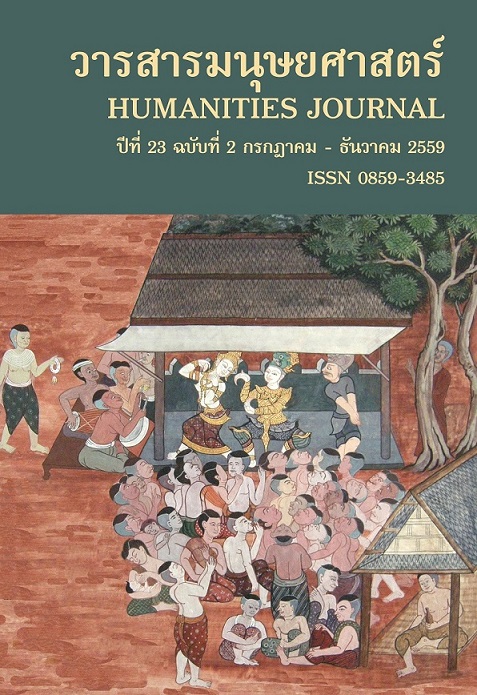การวิเคราะห์เปรียบเทียบท่อนช้าในเปียโนโซนาตาของโวล์ฟกัง อะมาเดอุส โมสาร์ท และลุดวิก ฟาน เบโทเฟน Comparative Analysis of Slow Movements in Wolfgang Amadeus Mozart’s and Ludwig van Beethoven’s Piano Sonatas
Main Article Content
Abstract
ท่อนช้าในบทเพลงประเภทโซนาตามักเป็นท่อนที่มีความไพเราะ เป็นท่อนที่คีตกวีสามารถถ่ายทอดอารมณ์และความรู้สึกได้หลากหลาย ตั้งแต่ความอ่อนหวาน ความลึกซึ้งและความสงบจนถึงความรันทด ความโศกเศร้า และความมืดมน โวล์ฟกัง อะมาเดอุส โมสาร์ทและลุดวิก ฟาน เบโทเฟน ต่างเป็นคีตกวีในยุคคลาสสิก ทั้งคู่ได้ประพันธ์เปียโนโซนาตาไว้จานวนหนึ่ง ซึ่งเป็นเปียโนโซนาตาที่มีคุณค่าต่อวรรณกรรมเปียโนเป็นอย่างมาก การวิจัยนี้มีวัตถุประสงค์ที่จะศึกษาท่อนช้าในเปียโนโซนาตาของโมสาร์ทและเบโทเฟน เพื่อที่จะมีความเข้าใจและสามารถระบุความคล้ายคลึงและความแตกต่างในแง่มุมต่างๆ ได้ ผลวิจัยพบว่า ท่อนช้าของโมสาร์ทมักเป็นไปตามแบบแผน มีความไพเราะ เรียบง่าย ในขณะที่ท่อนช้าของเบโทเฟนมี 2 ลักษณะคือ ท่อนช้าที่เป็นไปตามแบบแผน มีบทบาทและลักษณะคล้ายคลึงกับท่อนช้าของโมสาร์ท และท่อนช้าที่มีความแปลกใหม่ มีการคิดค้นทดลองขยายแนวความคิดออกไปหลายด้าน คือด้านบทบาท เนื้อหาและการออกแบบ ความสัมพันธ์ระหว่างท่อนและความเป็นเอกภาพของบทเพลง โครงสร้าง กุญแจเสียงและการย้ายกุญแจเสียง และลักษณะการประพันธ์
A slow movement in a sonata usually contains great beauty. It is the movement in which the composer can express a variety of emotions and feelings from sweetness, profundity and serenity to melancholy, sorrowfulness and darkness. Wolfgang Amadeus Mozart and Ludwig van Beethoven are both composers of the classical period. They composed a considerable number of piano sonatas, which are major contributions to piano literature. This research attempts to gain a better understanding of the slow movements in piano sonatas of Mozart and Beethoven and to identify their similarities and differences. The study reveals that Mozart’s slow movement usually follows conventional practice, beautiful and simple. Beethoven’s slow movements, however, are of two different types: one is similar to Mozart’s, but the other has new dimensions which explore and expand in many directions, which are role, content and design, relationship between movements and composition unity, structure, key and modulation, and composition characteristics.


